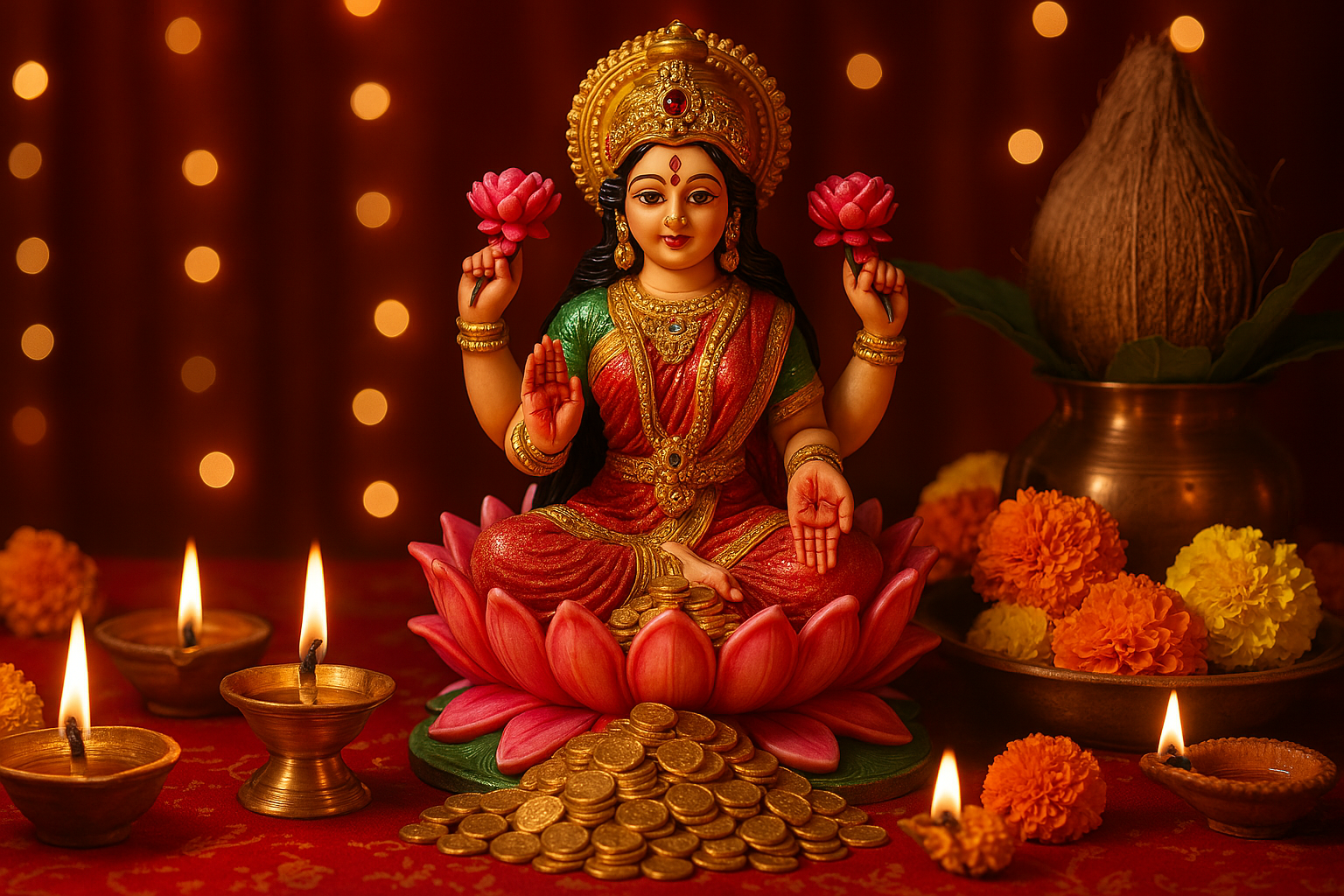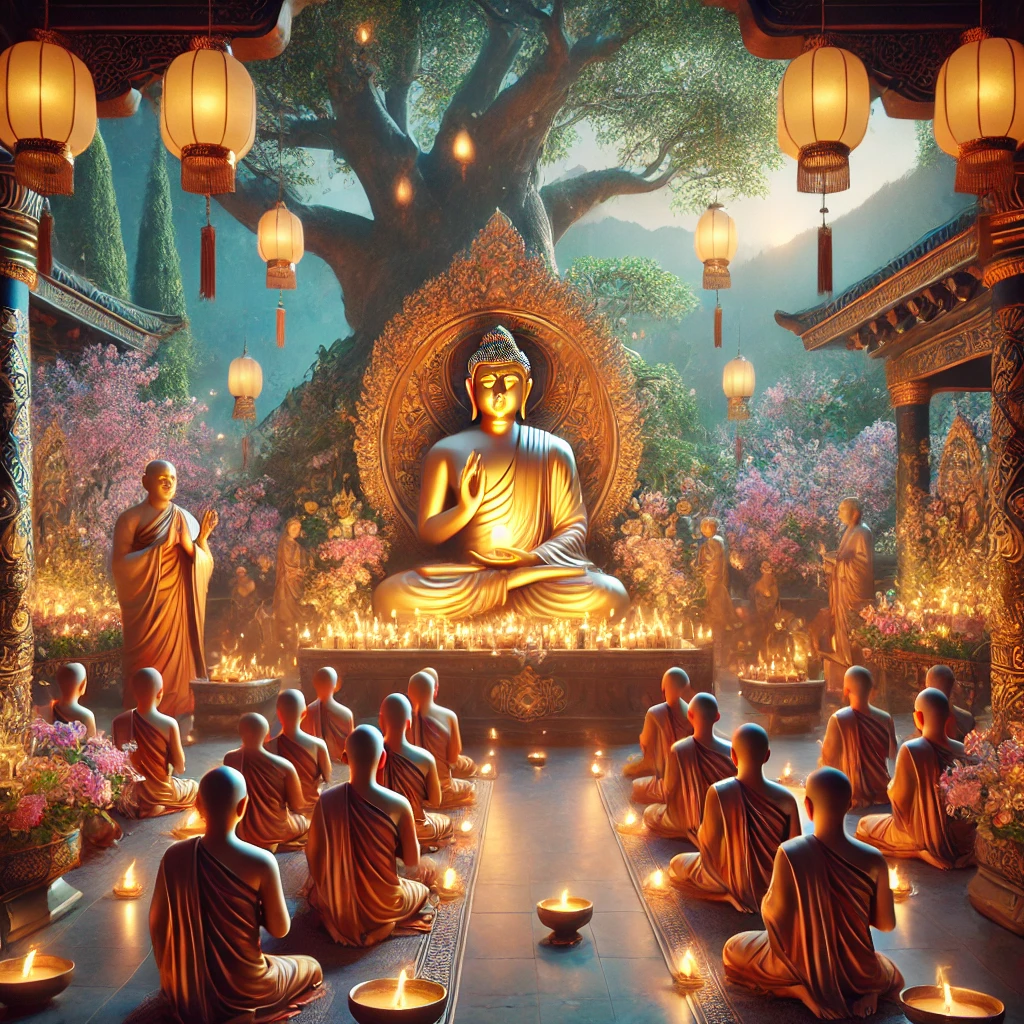Article Contents
What is Janmashtami
Janmashtami, also known as Krishna Janmashtami or Gokulashtami, is one of the most sacred and widely celebrated Hindu festivals, commemorating the birth of Lord Krishna, the eighth incarnation (avatar) of Lord Vishnu. Observed on the eighth day (Ashtami) of the Krishna Paksha (dark fortnight) in the month of Bhadrapada (August–September), Janmashtami is marked by grand festivities, devotional activities, fasting, and joyous celebrations throughout India and in Hindu communities worldwide.
The Significance of Janmashtami
Janmashtami holds immense religious and spiritual significance, as Lord Krishna is revered as the divine protector, the preserver of dharma (righteousness), and the supreme being who descended to earth to eliminate evil forces and restore cosmic balance. His life and teachings, as recorded in the Bhagavad Gita and the Mahabharata, continue to inspire millions of devotees.
Lord Krishna’s birth story is a tale of divine intervention, devotion, and triumph over oppression. According to Hindu mythology, he was born in Mathura, in a prison cell, to Devaki and Vasudeva. Devaki’s brother, the tyrannical King Kansa, had imprisoned them due to a prophecy that her eighth child would be the cause of his death. Miraculously, on the night of Krishna’s birth, divine forces aided Vasudeva in secretly transporting the newborn to Gokul, where he was raised by Yashoda and Nanda Maharaj. This event symbolizes the victory of good over evil and is the core essence of Janmashtami celebrations.
How Janmashtami is Celebrated
Janmashtami is a festival that blends devotion, joy, and cultural traditions. The celebrations vary across regions, yet they all emphasize the devotion to Krishna through various rituals, prayers, and festivities.
- Fasting (Upvas) and Feasting
Many devotees observe a strict fast on Janmashtami, which continues until midnight, the time of Krishna’s birth. Some follow a nirjal vrat (without water), while others consume only fruits and non-grain foods. After midnight, the fast is broken with prasad, sweets, and special dishes prepared in Krishna’s honor. - Midnight Celebrations & Krishna Abhishek
Temples and homes are decorated with flowers, lights, and rangoli (decorative floor art). The idol of baby Krishna (Bal Gopal) is placed in a beautifully adorned cradle and worshipped with rituals like Abhishek (holy bath with milk, honey, and ghee). Devotees sing bhajans (devotional songs) and perform aarti (ceremonial worship) to welcome Krishna’s divine presence. - Dahi Handi: The Playful Celebration
In Maharashtra and parts of North India, the festival is known for the thrilling Dahi Handi event. This reenacts Krishna’s mischievous childhood pastime of stealing butter from earthen pots hung high above the ground. Groups of young men, called Govindas, form human pyramids to break the pot, symbolizing Krishna’s love for dairy products and his playful spirit. - Raas Leela and Cultural Programs
Devotional dramas and dance performances depicting Krishna’s childhood pranks, his divine love for Radha, and the Raas Leela (divine dance) are organized in temples and community centers. These plays, called Krishna Leela, are performed with great enthusiasm, especially in Mathura, Vrindavan, and Dwarka. - Decorating Temples and Homes
Temples dedicated to Lord Krishna, such as ISKCON temples worldwide, witness grand celebrations with beautifully adorned idols, elaborate floral decorations, and spiritual discourses. Devotees also create miniature replicas of Krishna’s childhood home, Gokul, and decorate their homes with swings, flutes, peacock feathers, and butter pots. - Special Chants and Devotional Songs
Devotees engage in continuous chanting of Krishna mantras, such as:
“Hare Krishna, Hare Krishna, Krishna Krishna, Hare Hare
Hare Rama, Hare Rama, Rama Rama, Hare Hare”
The continuous repetition of these mantras is believed to bring spiritual upliftment and divine blessings.
Regional Variations in Janmashtami Celebrations
While the essence of Janmashtami remains the same, different regions of India celebrate it in their unique ways:
- Mathura & Vrindavan (Uttar Pradesh): As Krishna’s birthplace, Mathura hosts grand processions, temple rituals, and Raas Leela performances. Vrindavan, where Krishna spent his childhood, is known for its vibrant temple celebrations.
- Maharashtra: The Dahi Handi festival is the highlight, with teams competing to break the handi (pot) to win prizes.
- Gujarat & Dwarka: Krishna’s kingdom, Dwarka, witnesses grand temple festivities, aarti, and deep daan (lamp offerings).
- West Bengal & Odisha: Celebrated as Gokulashtami, special bhajans and readings from the Bhagavad Gita are performed.
- South India: Devotees draw tiny footprints of Krishna from the entrance to the prayer area, symbolizing his arrival. Sweet dishes like seedai and appam are offered.
Spiritual Lessons from Janmashtami
Beyond its grandeur and festive appeal, Janmashtami teaches deep spiritual and ethical lessons:
- Victory of Good Over Evil: Krishna’s birth marked the end of Kansa’s tyranny, symbolizing righteousness prevailing over injustice.
- Devotion & Surrender: Krishna’s devotees, from Radha to the Gopis and Arjuna, showed complete surrender and love for the divine.
- Karma and Dharma: The Bhagavad Gita, delivered by Krishna, emphasizes the importance of performing one’s duty (dharma) without attachment to the results.
- Divine Love & Compassion: Krishna’s Leelas (divine acts) reflect boundless love and kindness toward all beings.
Frequently Asked Questions (FAQs) About Janmashtami
What can we eat during the Janmashtami fast?
During the fast, devotees consume only sattvic (pure) foods. Common fasting foods include fruits, nuts, milk, makhana (fox nuts), singhare ka atta (water chestnut flour), rajgira (amaranth), and special vrat dishes like sabudana khichdi and kuttu puri. Onion, garlic, grains, and lentils are avoided.
How to do Janmashtami pooja at home?
To perform Janmashtami pooja at home:
- Clean the puja area and place an idol or picture of baby Krishna.
- Decorate with flowers, rangoli, and diyas.
- Offer milk, curd, honey, and butter for Abhishek (holy bath).
- Dress Krishna in new clothes and place him in a decorated swing.
- Perform aarti and bhajans, and read Krishna’s childhood stories.
- Observe the fast and break it after midnight with prasad.
Why is Janmashtami celebrated for 2 days?
Janmashtami is sometimes observed over two days due to different interpretations of the lunar calendar. Smarta Hindus (householders) celebrate on the first day, while Vaishnavas (devotees of Vishnu) celebrate on the second. Additionally, different regions may observe different traditions based on moonrise timings.
When is Janmashtami in 2025?
In Bangladesh, Janmashtami, also known as Shuba Janmashtami, will be observed on Saturday, August 16, 2025. This festival, celebrating the birth of Lord Krishna, is recognized as a national holiday in Bangladesh.
Janmashtami is more than just a festival; it is a celebration of faith, devotion, and the timeless teachings of Lord Krishna. Whether through fasting, prayers, dance, or joyous festivities, devotees connect with Krishna’s divine essence and seek his blessings for a life of righteousness, love, and spiritual wisdom.
Related Topics
-
Lakshmi Puja: The Festival of Prosperity and Devotion
Lakshmi Puja is a Hindu festival dedicated to the worship of Goddess Lakshmi, the deity of wealth, prosperity, and fortune. This festival is an integral part of Diwali,…
-
Radha Ashtami: The Auspicious Celebration of Srimati Radharani’s Birth
Article ContentsWhen is Radha Ashtami in 2025?The Importance of Srimati Radharani in VaishnavismThe Celebration of Radha Ashtami in BangladeshSpiritual and Philosophical SignificanceConclusion When is Radha Ashtami in 2025?…
-
Buddha Purnima: The Most Sacred Buddhist Festival in Bangladesh
Article ContentsWhat is Buddha Purnima?Historical Background of Buddhism in BangladeshReligious SignificanceBuddha Purnima Celebrations in BangladeshSpecial Rituals and OfferingsGovernment and Public ObservanceBuddha Purnima Beyond BangladeshBuddha’s Teachings and Their Relevance…
-
Janmashtami: The Birth Celebration of Lord Krishna
Article ContentsWhat is JanmashtamiThe Significance of JanmashtamiHow Janmashtami is CelebratedRegional Variations in Janmashtami CelebrationsSpiritual Lessons from JanmashtamiFrequently Asked Questions (FAQs) About Janmashtami What is Janmashtami Janmashtami, also known…
-
International Mother Language Day: Celebrating Linguistic and Cultural Diversity
Article ContentsOrigins of International Mother Language DayThe Importance of Linguistic DiversityHow to Celebrate International Mother Language DayHow does technology help in preserving languages?Challenges and the Way ForwardConclusionFrequently Asked…






